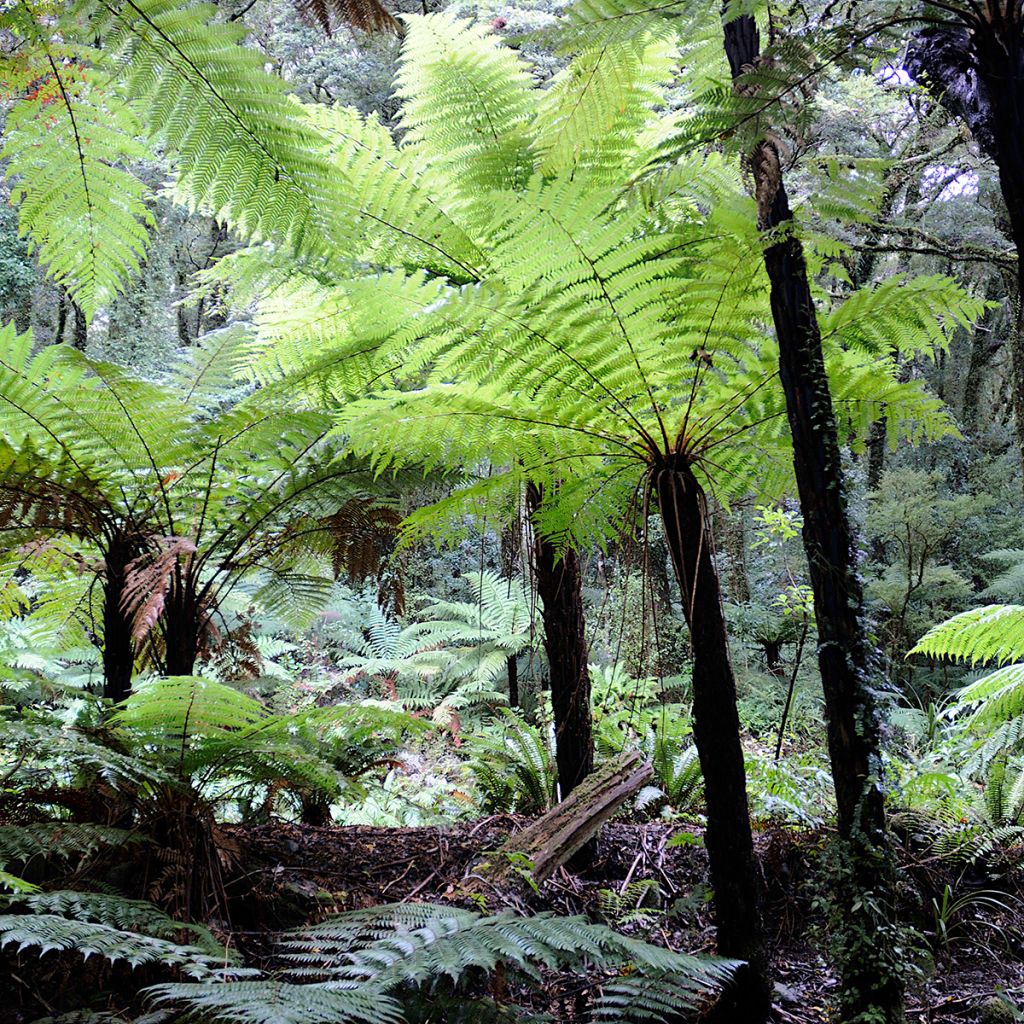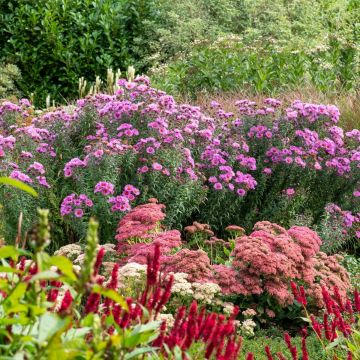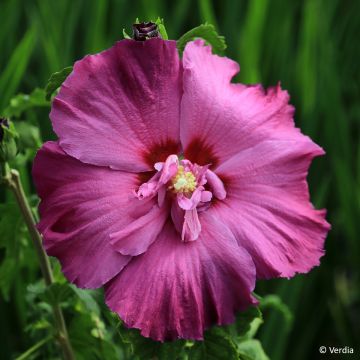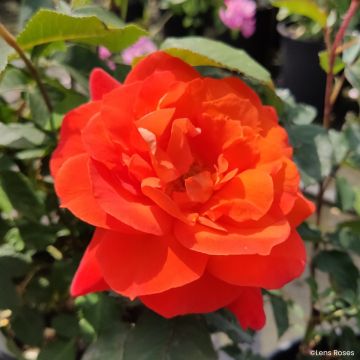

Tree Fern House & Garden Mixed glaucum
Tree Fern House & Garden Mixed glaucum
Tree Fern House & Garden Mixed
Shave
ALINE D., 11/03/2017
Special offer!
Receive a €20 voucher for any order over €90 (excluding delivery costs, credit notes, and plastic-free options)!
1- Add your favorite plants to your cart.
2- Once you have reached €90, confirm your order (you can even choose the delivery date!).
3- As soon as your order is shipped, you will receive an email containing your voucher code, valid for 3 months (90 days).
Your voucher is unique and can only be used once, for any order with a minimum value of €20, excluding delivery costs.
Can be combined with other current offers, non-divisible and non-refundable.
Why not try an alternative variety in stock?
View all →This plant carries a 6 months recovery warranty
More information
We guarantee the quality of our plants for a full growing cycle, and will replace at our expense any plant that fails to recover under normal climatic and planting conditions.
Would this plant suit my garden?
Set up your Plantfit profile →
Description
These large ferns eventually form real trees reminiscent of the lush forests that reigned over a lost world. They develop a single stem, resembling a trunk, and an umbrella-shaped crown composed of majestic fronds. Bringing together species from the Cyathea and Dicksonia genus, this mix 'Tree Fern House & Garden Mixed' allows for about 25 spectacular ferns. They are fascinating plants, and their sowing is worth attempting. These living fossils are grown in large pots in the shelter of a greenhouse, a veranda, or in open ground, in a rather mild climate. Slightly to moderately hardy, they appreciate humid atmospheres, dim light, as well as humus-rich and fresh soil. Worth discovering.
The tree ferns of the mix 'Tree Fern House & Garden Mixed' are species from the Cyathea and Dicksonia genus. The Dicksonia antartica species is really known to the general public, due to its good hardiness. However, other species are quite easy to acclimate here, with some precautions. Most tree ferns are native to the tropical and subtropical humid areas of the globe. These are flowerless plants, with an archaic mode of reproduction, which have evolved very little over the ages. They already populated vast areas in the heart of dinosaur-filled forests in the Jurassic period, 130 million years ago. Today, they are still found growing in pine forests, often in mountains invaded by fog and drizzle. Dicksonia are true ferns, they are distinguished by a single bud ending a vertical stem, the heart of which is made up of a system of conductive and supportive tissues, often wrapped in covering aerial roots. The fronds are large, with a downy base. Some of them reach 15 m (49 ft 2 in) in height for 2.5 m (8 ft 2 in) in span, after many years, as their growth is slow. Cyathea vary greatly in size depending on the species. They also have a single stem, and a crown of fronds whose base is covered with hairs or scales, sometimes spiny. They often remain, even after the fronds have withered, their scar forming an interesting design on the trunk. The leaves of the ferns are often rolled up in a crozier at the beginning of their development.
The mode of reproduction of ferns is very peculiar, it has long been the subject of speculation, probably at the origin of many magical beliefs surrounding ferns. Adult ferns are called sporophytes, they produce on the back of their fronds small sacs called sporangia, filled with spores. From the germination of a spore, a tiny gametophyte, the prothallus, is born, whose sole function is to form gametes: spermatia (male) and oospheres (female). The egg is formed on this prothallus. The embryo resulting from the egg evolves into a new sporophyte. In tree ferns, the first stem perishes when another straight and tall one has developed.
Tree ferns are magnificent plants of humid undergrowth, and enjoy humid climates where frosts are not too marked. They are planted in isolation or in mass, along with Rhododendrons, Azaleas, Fuschias, Astilbes, Heucheras, Petasites, Rodgersias, Lamiums, Carex, or any plant requiring the same cultivation conditions. Grown in large containers, they will form over time sumptuous indoor plants, which will make their breeders proud. Because it is indeed a matter of raising them, in the literal and figurative sense, with patience and method.
Foliage
Plant habit
Botanical data
Tree Fern House & Garden Mixed
Cyatheaceae, Dicksoniaceae
Cultivar or hybrid
Planting and care
Tree ferns can be sown at any time of the year. To sow the spores, you can use trays, terrines, or pots filled with compost and enclosed in a propagator, mini-greenhouse, or any warm place with a temperature of 20-25°C. Spread the spores on a mix of sand, turf, and compost surface and keep them near a light source. Do not cover the seeds with the mixture. Enclose the container inside a transparent plastic bag and leave it under low light until germination, which can take 10 days to a year or more.
Transplant the young plants in small clumps with care, preferably in pots with a 7.5 cm (3 in) diameter. You can then move them to larger pots with a diameter of 13cm (5.1 in) and finally to pots with a diameter of 20cm (7.9 in). These plants prefer light and well-draining soil, possibly supplemented with sand. You can grow them in large pots or boxes, in shaded greenhouses, or on the veranda.
What's interesting about these tree ferns is that their 'trunk' is a rootstock filled with water and nutrient reserves. That's why the feet of Dicksonia antartica are sometimes sold without roots and fronds. In this case, the roots appear after two years of cultivation. All you need to do is provide water to this 'trunk' and enrich the watering water 2 to 3 times during the summer to give them what they need most. Gently pour the water (preferably non-limestone) at the top of the trunk, at the base of the fronds, and it will slowly slide down the surface of the trunk-rootstock and be absorbed by the plant.
The English are fond of these plants, often purchased without roots from garden centres. The moist trunk is placed directly on the soil, and new fronds appear around April, giving the plant more than fifteen leaves at the top of a trunk 1.20 metres (3 feet 11 inches) high the following spring.
Sowing period
Intended location
Planting & care advice
-
, onOrder confirmed
Reply from on Promesse de fleurs
Haven't found what you were looking for?
Hardiness is the lowest winter temperature a plant can endure without suffering serious damage or even dying. However, hardiness is affected by location (a sheltered area, such as a patio), protection (winter cover) and soil type (hardiness is improved by well-drained soil).

Photo Sharing Terms & Conditions
In order to encourage gardeners to interact and share their experiences, Promesse de fleurs offers various media enabling content to be uploaded onto its Site - in particular via the ‘Photo sharing’ module.
The User agrees to refrain from:
- Posting any content that is illegal, prejudicial, insulting, racist, inciteful to hatred, revisionist, contrary to public decency, that infringes on privacy or on the privacy rights of third parties, in particular the publicity rights of persons and goods, intellectual property rights, or the right to privacy.
- Submitting content on behalf of a third party;
- Impersonate the identity of a third party and/or publish any personal information about a third party;
In general, the User undertakes to refrain from any unethical behaviour.
All Content (in particular text, comments, files, images, photos, videos, creative works, etc.), which may be subject to property or intellectual property rights, image or other private rights, shall remain the property of the User, subject to the limited rights granted by the terms of the licence granted by Promesse de fleurs as stated below. Users are at liberty to publish or not to publish such Content on the Site, notably via the ‘Photo Sharing’ facility, and accept that this Content shall be made public and freely accessible, notably on the Internet.
Users further acknowledge, undertake to have ,and guarantee that they hold all necessary rights and permissions to publish such material on the Site, in particular with regard to the legislation in force pertaining to any privacy, property, intellectual property, image, or contractual rights, or rights of any other nature. By publishing such Content on the Site, Users acknowledge accepting full liability as publishers of the Content within the meaning of the law, and grant Promesse de fleurs, free of charge, an inclusive, worldwide licence for the said Content for the entire duration of its publication, including all reproduction, representation, up/downloading, displaying, performing, transmission, and storage rights.
Users also grant permission for their name to be linked to the Content and accept that this link may not always be made available.
By engaging in posting material, Users consent to their Content becoming automatically accessible on the Internet, in particular on other sites and/or blogs and/or web pages of the Promesse de fleurs site, including in particular social pages and the Promesse de fleurs catalogue.
Users may secure the removal of entrusted content free of charge by issuing a simple request via our contact form.
The flowering period indicated on our website applies to countries and regions located in USDA zone 8 (France, the United Kingdom, Ireland, the Netherlands, etc.)
It will vary according to where you live:
- In zones 9 to 10 (Italy, Spain, Greece, etc.), flowering will occur about 2 to 4 weeks earlier.
- In zones 6 to 7 (Germany, Poland, Slovenia, and lower mountainous regions), flowering will be delayed by 2 to 3 weeks.
- In zone 5 (Central Europe, Scandinavia), blooming will be delayed by 3 to 5 weeks.
In temperate climates, pruning of spring-flowering shrubs (forsythia, spireas, etc.) should be done just after flowering.
Pruning of summer-flowering shrubs (Indian Lilac, Perovskia, etc.) can be done in winter or spring.
In cold regions as well as with frost-sensitive plants, avoid pruning too early when severe frosts may still occur.
The planting period indicated on our website applies to countries and regions located in USDA zone 8 (France, United Kingdom, Ireland, Netherlands).
It will vary according to where you live:
- In Mediterranean zones (Marseille, Madrid, Milan, etc.), autumn and winter are the best planting periods.
- In continental zones (Strasbourg, Munich, Vienna, etc.), delay planting by 2 to 3 weeks in spring and bring it forward by 2 to 4 weeks in autumn.
- In mountainous regions (the Alps, Pyrenees, Carpathians, etc.), it is best to plant in late spring (May-June) or late summer (August-September).
The harvesting period indicated on our website applies to countries and regions in USDA zone 8 (France, England, Ireland, the Netherlands).
In colder areas (Scandinavia, Poland, Austria...) fruit and vegetable harvests are likely to be delayed by 3-4 weeks.
In warmer areas (Italy, Spain, Greece, etc.), harvesting will probably take place earlier, depending on weather conditions.
The sowing periods indicated on our website apply to countries and regions within USDA Zone 8 (France, UK, Ireland, Netherlands).
In colder areas (Scandinavia, Poland, Austria...), delay any outdoor sowing by 3-4 weeks, or sow under glass.
In warmer climes (Italy, Spain, Greece, etc.), bring outdoor sowing forward by a few weeks.




















































